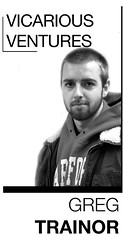 When you think of community service, you think of helping the impoverished, not cleaning up after irresponsible frat boys.
When you think of community service, you think of helping the impoverished, not cleaning up after irresponsible frat boys.
“We actually have all the volunteers we need to paint, but you can help pick trash off the street. We have trash bags and gloves over here,” said a young site supervisor at the Amos Recreation Center, located at 16th and Berks Streets, directly across the street from party houses Corona, Alpha Tau Omega and Alpha Chi Ro.
At first, I couldn’t help but imagine a fraternity brother, wearing layered pastel polo shirts, laughing as he threw trash at my feet for me to diligently scoop up. But I reminded myself of the other Temple students walking down the street, cleaning up trash.
Those students and I were participants in the Second Annual Philly Spring Cleanup, which came and went a few weeks ago, unnoticed by most Temple students. It was the sequel to Mayor Michael Nutter’s successful city-wide day of service.
Last year, Nutter had a simple idea: to ask for 10,000 volunteers to serve all over Philadelphia at more than 100 different sites. The projects consisted of simple tasks like cleaning up trash, painting a community recreation center and planting trees.
Instead, 15,000 volunteers turned out, helping to clean up nearly three times the amount of trash Nutter hoped to see removed. It was a powerful message that Philadelphians are ready to help. It seems they just needed someone to organize them.
But this year, advertising for the cleanup was cut, due to the city’s budget crisis. A group of Fox news reporters, who volunteered at this year’s city-wide event, said there were signs about last year’s upcoming Philly Spring Cleanup posted all over Temple’s campus. This year, if I hadn’t been researching poverty in North Philadelphia for a blog I’m working on, I probably would have slept through the day without ever realizing I’d missed anything.
The advertising may have been lacking this year, but Temple was well represented at the Amos Recreation site.
After hauling back a third bag of cigarette butts, beer bottles and food wrappers, the site supervisor told me the painting was finished, but if I wanted to keep working, I could continue on to the next work site.
There were volunteers working down every street I passed. On one street, I saw a mother holding open a garbage bag so her 4-year-old son could jump up and dunk trash into it. He seemed to be having a blast cleaning up trash.
“That’s a good mom,” I thought.
I realized I was probably as good as cleaning up trash at the recreation center I was searching for, so I walked up to the nearest volunteer group – a young couple working with its teenage neighbor in a huge abandoned lot. As we walked through the lot picking out the cigarette butts and food wrappers, I quizzed the guy about the neighborhood.
We talked for a while about what it felt like to clean up trash in a place no one seems to care about, knowing full well that someone would most likely throw more trash there later that day. We talked about the people who had passed us as we cleaned up that day – the hustlers who laughed at us and the homeless guy who yelled across the street: “Good job, man. Ha, I ain’t never seen nothin’ like that. Not in my whole life.”
I couldn’t tell if he was making fun of or complimenting me.
But at the end of the day, this local volunteer I was working with suddenly turned to me and told me everything I needed to hear to know we’d made a difference.
“You know what, though?” he said. “There’s less trash in this lot this year than when we cleaned it last year.”
Greg Trainor can be reached at greg.trainor@temple.edu.



Be the first to comment